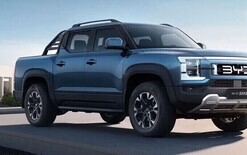Perfect storm hits new-car sales

Regulatory changes, economic pressures and shifting buyer preferences have mounted up to impact sales of new vehicles in New Zealand.
These factors continue to shape trends across all light-vehicle categories a year after the clean car discount (CCD) was canned and they are coupled with broader market adjustments.
Overall, registrations tumbled by 13.5 per cent in 2024 when compared to 2023 despite a year-on-year jump of 5.6 per cent during December.
Last month’s figures reflect a partial recovery from recent market volatility, reports the Motor Industry Association (MIA), which acknowledges the complexities facing the automotive sector as it adapts to evolving regulations and market dynamics.
While the uptick in December’s statistics “offers a glimmer of recovery”, last year’s decline highlights a “pressing need for policy stability to support sustained market growth and resilience”.
Aimee Wiley, the MIA’s chief executive, says: “Looking ahead, the industry’s primary challenge will be navigating the stricter clean car standard targets introduced for importers from January 1, 2025, while simultaneously supporting the transition to lower-emissions vehicles [LEVs].
“Achieving this balance is essential to avoid significant vehicle price inflation in 2025 and beyond.”
She stresses that consumer preferences remain clear with SUVs and light commercials continuing to dominate New Zealand’s market.
Wiley, pictured above, also highlights encouraging trends in the demand for hybrid models across all segments in 2024, reflecting a gradual shift to LEVs.
However, she cautions that stricter carbon dioxide (CO2) targets present importers with major challenges.
“Consumer demand simply does not align with the stringent CO2 targets for light passenger vehicles in 2025,” says Wiley.
“Importers face a delicate balancing act to meet these targets and avoid penalties, which could lead to consumer vehicle price inflation unless genuine demand for EVs rebounds significantly in 2025.
“The industry must work collaboratively to address these challenges while ensuring vehicles remain affordable and accessible for New Zealanders.”
.jpg)
Industry registrations
Sales in 2024 were 13.5 per cent lower than during 2023, which equated to a reduction of 20,212 units. When compared to 2022, the decline was more pronounced at 21.8 per cent and 35,936 units.
In December, 10,315 new vehicles were registered for a 5.6 per cent increase – or by 547 units – compared to the same month in 2023.
That said, the scrapping of the CCD at the end of December 2023 introduced distortions for year-on-year comparisons.
Comparing December 2024 to December 2022, a more representative benchmark, reveals a 12.8 per cent decline of 1,520 units, reports the MIA.
During December last year, 2,682 commercial vehicles were registered for an increase of 329.8 per cent, and 2,058 units, when compared to December 2023.
This “dramatic” rise can be attributed to a prior-purchase hold-off during the CCD fee changes, says Wiley. A better-balanced comparison against December 2022 shows a 4.6 per cent decline of 130 units.
Year-to-date commercial registrations rose by 10.1 per cent and 3,095 units when compared to 2023.
Wiley says: “2023’s figures were significantly impacted by the CCD’s fees, which discouraged purchases and led to an artificially low baseline for year-on-year comparisons.
“Against 2022, a more representative year, 2024’s registrations were down 18.2 per cent [7,527 units], highlighting broader market adjustments and evolving purchasing patterns.”
In December 2024, some 423 heavy vehicles were registered, a “sharp deviation” from the preceding months and previous December averages.
This figure represented a 27.1 per cent decline, or 157 units, when compared to December 2023 and a 19.1 per cent drop, or 100 units, against the same month in 2022.
“Such a significant reduction suggests an anomalous factor affecting December’s results, potentially driven by delayed orders or seasonal adjustments,” notes Wiley.
Heavy-vehicle registrations declined by 2.9 per cent, or 228 units, last year versus 2023 to align with “moderate market adjustments”.
That said, last year’s sales of heavy vehicles were 6.3 per cent higher, and up by 452 units, than in 2022 to underscore a “positive longer-term trajectory”.






